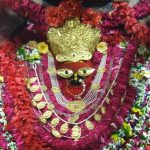The 12 Days of Christmas are currently most well known as a tune about somebody accepting heaps of presents from their ‘genuine affection’. Be that as it may, to get to the tune there must be the days to begin with!
The 12 Days of Christmas start on Christmas Day and last until the night of the fifth January – otherwise called Twelfth Night. The 12 Days have been praised in Europe since before the medieval times and were a period of festivity. The 12 Days each generally praise a dining experience day for a holy person and additionally have various festivals:
Day 1 (25th December): Christmas Day -celebrating the Birth of Jesus
Day 2 (26th December likewise known as Boxing Day): St Stephen’s Day. He was the principal Christian saint (somebody who bites the dust for their confidence). It’s likewise the day when the Christmas Carol ‘Great King Wenceslas’ happens.
Day 3 (27th December): St John the Apostle (One of Jesus’ Disciples and companions)
Day 4 (28th December): The Feast of the Holy Innocents – when individuals remember the infant young men which King Herod killed when he was attempting to discover and kill the Baby Jesus.
Day 5 (29th December): St Thomas Becket. He was Archbishop of Canterbury in the twelfth century and was killed on 29th December 1170 for testing the King’s position over the Church.
Day 6 (30th December): St Egwin of Worcester.
 Day 7 (31st December): New Year’s Eve (known as Hogmanay in Scotland). Pope Sylvester I is generally celebrated on this day. He was perhaps the soonest pope (in the fourth Century). In numerous focal and eastern European nations (counting Austria, Bosnia and Herzegovina, Croatia, Czechia, Germany, Hungary, Israel, Italy, Luxembourg, Poland, Slovakia, Switzerland and Slovenia) New Year’s Eve is still some of the time called ‘Silvester’. In the UK, New Year’s Eve was a conventional day for ‘games’ and brandishing rivalries. Bows and arrows was a mainstream sport and during the medieval times it was the law that it must be drilled by all men between ages 17-60 on Sunday after Church! This was so the King had bunches of generally excellent toxophilite prepared in the event that he have to do battle!
Day 7 (31st December): New Year’s Eve (known as Hogmanay in Scotland). Pope Sylvester I is generally celebrated on this day. He was perhaps the soonest pope (in the fourth Century). In numerous focal and eastern European nations (counting Austria, Bosnia and Herzegovina, Croatia, Czechia, Germany, Hungary, Israel, Italy, Luxembourg, Poland, Slovakia, Switzerland and Slovenia) New Year’s Eve is still some of the time called ‘Silvester’. In the UK, New Year’s Eve was a conventional day for ‘games’ and brandishing rivalries. Bows and arrows was a mainstream sport and during the medieval times it was the law that it must be drilled by all men between ages 17-60 on Sunday after Church! This was so the King had bunches of generally excellent toxophilite prepared in the event that he have to do battle!
Day 8 (first January): first January – Mary, the Mother of Jesus
Day 9 (second January): St. Basil the Great and St. Gregory Nazianzen, two significant fourth century Christians.
Day 10 (third January): Feast of the Holy Name of Jesus. This recollects when Jesus was formally ‘named’ in the Jewish Temple. It’s commended by various temples on a wide number of various dates!
Day 11 (fourth January): St. Elizabeth Ann Seton, the main American holy person, who lived in the eighteenth and nineteenth hundreds of years. In the past it likewise praised the dining experience of Saint Simon Stylites (who lives on a little stage on the highest point of a column for a long time!).
Day 12 (fifth January likewise known as Epiphany Eve): St. John Neumann who was the principal Bishop in American. He lived in the nineteenth century.
Twelfth Night
 Twelfth Night ( The 12 Days of Christmas ) was a big deal of festivity with individuals holding huge gatherings. During these gatherings, regularly the jobs in the public eye were switched with the workers being served by the rich individuals. This dated back to medieval and Tudor occasions when Twelfth Night denoted the finish of ‘winter’ which had begun on 31st October with All Hallows Eve (Halloween).
Twelfth Night ( The 12 Days of Christmas ) was a big deal of festivity with individuals holding huge gatherings. During these gatherings, regularly the jobs in the public eye were switched with the workers being served by the rich individuals. This dated back to medieval and Tudor occasions when Twelfth Night denoted the finish of ‘winter’ which had begun on 31st October with All Hallows Eve (Halloween).
Toward the beginning of Twelfth Night the Twelfth Night cake was eaten. This was a rich cake made with eggs and spread, organic product, nuts and flavors. The modern Italian Panettone is the cake we presently have that is most similar to the old Twelfth Night cake.
Must Read:Christmas Special: Traditions of Christmas Bells
A dried pea or bean was cooked in the cake. Whoever discovered it was the Lord (or Lady) of Misrule for night. The Lord of Misrule drove the festivals and was dressed like a King (or Queen). This custom returns to the Roman festivals of Saturnalia. In later occasions, from about the Georgian time frame onwards, to make the Twelfth Night ‘gentile’, two tokens were placed in the cake (one for a man and one for a ladies) and whoever discovered them turned into the ‘Ruler’ and ‘Sovereign’ of the Twelfth Night party.
In English Cathedrals, during the medieval times, there was the custom of the ‘Kid Bishop’ where a kid from the Cathedral or cloister school was chosen as a Bishop on sixth December (St Nicholas’ Day) and had the authority of a Bishop (but to perform Mass) until 28th December. Lord Henry VIII restricted the training in 1542 in spite of the fact that it returned quickly under Mary I in 1552 however Elizabeth I at last halted it during her rule.
During Twelfth Night it was conventional for various sorts of funnels to be played, particularly bagpipes. Loads of games were played incorporating ones with eggs. These included hurling an egg between two individuals moving further separated during each toss – drop it and you lose; and passing an egg around on spoons. Another famous game was ‘snapdragon’ where you picked raisins or other dried organic product out of a plate of blazing cognac!
The primary Monday after the Christmas feast has completed was known as ‘Furrow Monday’ as this was when cultivating work would all start once more!
In numerous pieces of the UK, individuals likewise went Wassailing on Twelfth Night.
Must Read:Christmas Special: CHRISTMAS OR XMAS????
Twelfth Night is otherwise called Epiphany Eve. In numerous nations it’s customary to put the figures of the Wise Men/Three Kings into the Nativity Scene on Epiphany Eve prepared to celebrate Epiphany on the sixth January.
It’s likewise customary to bring your Christmas enhancements down after Twelfth Night.
Twelfth Night is likewise the name of a popular play composed by William Shakespeare. It’s idea it was written in 1601/1602 and was first performed at Candlemas in 1602, in spite of the fact that it wasn’t distributed until 1623.









